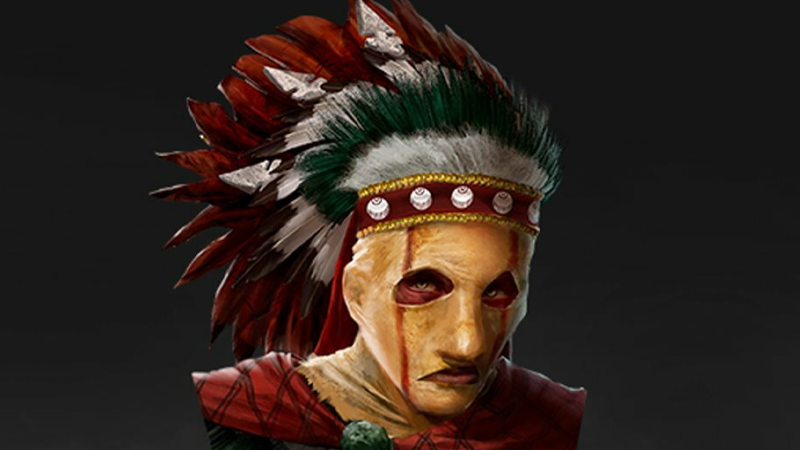
In the pantheon of ancient Aztec gods, few deities are as intriguing and complex as Xipe Totec. Known as the "Our Lord the Flayed One," Xipe Totec was a god of agriculture, vegetation, the east, disease, spring, goldsmiths, silversmiths, liberation, and the seasons. His domain over seemingly contrasting aspects like agriculture and disease reflects the multifaceted nature of Aztec religious beliefs, where deities often embodied both creation and destruction.
Origins and Significance
Xipe Totec's origins are rooted deep in Mesoamerican culture, predating even the Aztec civilization. His worship was widespread across various Mesoamerican cultures, indicating his significance in the region's mythology. The Aztecs, inheriting and assimilating various cultural deities into their pantheon, positioned Xipe Totec as a vital figure in their religious landscape.
Symbolism and Iconography
The most striking aspect of Xipe Totec’s iconography is his depiction wearing the flayed skin of a human sacrifice, a stark symbol of death and rebirth. This skin, often painted yellow, was seen as a symbol of the decay of vegetation that occurs before agricultural renewal. As such, Xipe Totec was a deity of transformation and renewal, symbolizing the cycle of life, death, and rebirth that was central to Aztec beliefs.
Rituals and Celebrations
Xipe Totec was primarily worshipped during Tlacaxipehualiztli, a festival held in March at the spring equinox. This event involved gladiatorial sacrificial rites in which war prisoners were sacrificed to the deity. The most gruesome aspect of these rituals was the flaying of the victims, with priests donning their skins. These acts were believed to ensure fertility and the natural balance, symbolizing the death of the old and the birth of the new.
Agricultural and Seasonal Associations
As a god of agriculture and the seasons, Xipe Totec's worship was closely tied to the agricultural calendar. He was invoked to protect crops from diseases and to ensure a bountiful harvest. The flaying of human skin was symbolic of the shedding of the husk of maize, an essential crop, and the emergence of new life.
Modern Interpretations
Today, Xipe Totec remains a subject of fascination and study among historians, anthropologists, and enthusiasts of Mesoamerican cultures. His worship, seen through a modern lens, offers insights into the complex worldviews of the Aztecs, where life and death, beauty and horror, were intimately intertwined.
In conclusion, Xipe Totec stands as a powerful symbol of the cyclical nature of life, embodying regeneration, renewal, and the interconnectedness of life and death. His worship, though seemingly macabre, was a profound expression of the Aztec understanding of the world's natural rhythms and the need for balance and renewal in all aspects of life. As we continue to explore and understand ancient civilizations, deities like Xipe Totec provide a window into the rich tapestry of beliefs and practices that shaped the human experience in eras long past.
Origins and Significance
Xipe Totec's origins are rooted deep in Mesoamerican culture, predating even the Aztec civilization. His worship was widespread across various Mesoamerican cultures, indicating his significance in the region's mythology. The Aztecs, inheriting and assimilating various cultural deities into their pantheon, positioned Xipe Totec as a vital figure in their religious landscape.
Symbolism and Iconography
The most striking aspect of Xipe Totec’s iconography is his depiction wearing the flayed skin of a human sacrifice, a stark symbol of death and rebirth. This skin, often painted yellow, was seen as a symbol of the decay of vegetation that occurs before agricultural renewal. As such, Xipe Totec was a deity of transformation and renewal, symbolizing the cycle of life, death, and rebirth that was central to Aztec beliefs.
Rituals and Celebrations
Xipe Totec was primarily worshipped during Tlacaxipehualiztli, a festival held in March at the spring equinox. This event involved gladiatorial sacrificial rites in which war prisoners were sacrificed to the deity. The most gruesome aspect of these rituals was the flaying of the victims, with priests donning their skins. These acts were believed to ensure fertility and the natural balance, symbolizing the death of the old and the birth of the new.
Agricultural and Seasonal Associations
As a god of agriculture and the seasons, Xipe Totec's worship was closely tied to the agricultural calendar. He was invoked to protect crops from diseases and to ensure a bountiful harvest. The flaying of human skin was symbolic of the shedding of the husk of maize, an essential crop, and the emergence of new life.
Modern Interpretations
Today, Xipe Totec remains a subject of fascination and study among historians, anthropologists, and enthusiasts of Mesoamerican cultures. His worship, seen through a modern lens, offers insights into the complex worldviews of the Aztecs, where life and death, beauty and horror, were intimately intertwined.
In conclusion, Xipe Totec stands as a powerful symbol of the cyclical nature of life, embodying regeneration, renewal, and the interconnectedness of life and death. His worship, though seemingly macabre, was a profound expression of the Aztec understanding of the world's natural rhythms and the need for balance and renewal in all aspects of life. As we continue to explore and understand ancient civilizations, deities like Xipe Totec provide a window into the rich tapestry of beliefs and practices that shaped the human experience in eras long past.